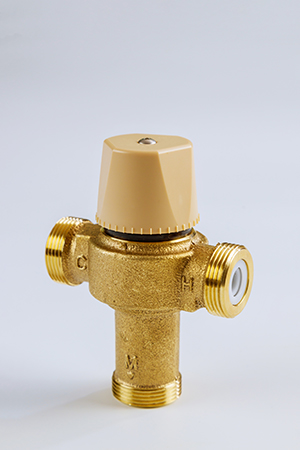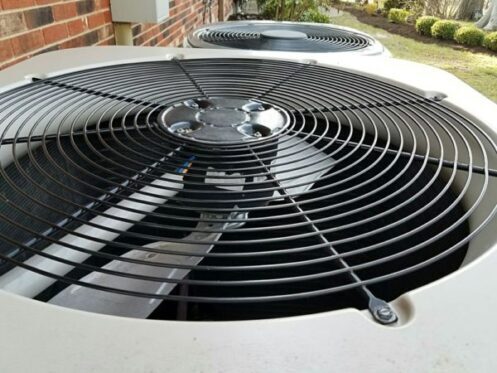Updated: January 2024
Cooling systems have a huge number of different components that all work together to help remove latent heat and keep the building cool. One of the most important components of any forced-air cooling system is the thermostatic expansion valve. To understand why it is so important, here is a full overview of thermostatic expansion valves and the role they play in a cooling system.
What Does a Thermostatic Expansion Valve Do?
Systems that are powered either by a central air conditioner or a heat pump both have a thermostatic expansion valve (TXV), which is located within the air handler right where the refrigerant line enters the evaporator coil. The purpose of the valve is to control how much refrigerant flows into the evaporator coil at one time, and this is essential for several reasons.
If the valve doesn’t allow enough refrigerant to flow into the evaporator coil, the rate at which the cooling system absorbs heat from the building will be much slower. This means that the system won’t cool nearly as effectively. Because of this, it will need to run for much longer and use more energy.
An even bigger issue can occur if the rate of the refrigerant flow is too fast. As the cold refrigerant in the coil absorbs heat energy from the air, it raises the refrigerant temperature. This process transforms the refrigerant from a cold liquid into a hot gas. If the refrigerant flows through the coil too quickly, it can result in some of it remaining in a liquid state as it exits the coil and flows back out to the outdoor unit.
If any liquid refrigerant enters the compressor, it can cause the system to break down and potentially destroy the compressor. Should this happen, you will most likely need to replace your air conditioner or heat pump. Although the compressor motor can be replaced, it usually never makes sense due to the high cost. In most cases, replacing the motor will end up costing about the same as replacing the entire unit.
How the Thermostatic Expansion Valve Controls Refrigerant Flow
When the liquid refrigerant flows through the TXV, the valve acts like a spray nozzle that forces the refrigerant into the evaporator coil. This process decreases the refrigerant pressure and causes some of the liquid refrigerant to turn into a gas. Hot air from inside the building is forced over the evaporator coil, and the latent heat in the air is absorbed by the refrigerant. This transforms the remaining liquid into a gas before it exits the coil.
The TXV has a special diaphragm that automatically reacts and adjusts to pressure changes within the evaporator coil. This diaphragm works to control the pressure of the refrigerant as it enters the coil, and this process ensures that there is the right balance of liquid and gas refrigerant entering the coil.
If there is too much liquid refrigerant entering the coil, then the heat from the air being forced over the coil won’t be sufficient to raise the temperature of the refrigerant high enough that all of the liquid turns into a gas. This will result in liquid refrigerant flowing back out to the compressor and potentially causing serious damage.
If the TXV decreases the refrigerant pressure too low, it results in most of the refrigerant entering the coil as a gas. This means that there won’t be enough cold liquid refrigerant inside the coil for the system to cool properly. As a result, very little heat will be absorbed and the system will need to run for far longer to fully cool the building.
How much heat the system is absorbing at one time determines the rate at which the refrigerant inside the coil turns from a liquid into a gas. The more heat there is in the air flowing over the coil, the more heat energy the refrigerant will absorb and the faster it will turn into a gas. If there isn’t as much heat in the air, the rate will slow down. The TXV works by constantly monitoring and adjusting the pressure to ensure that the system is cooling effectively and absorbing enough heat so that all of the refrigerant transforms into a gas before it exits the evaporator coil.
The TXV uses a special sensor located at the outlet where the refrigerant flows out of the evaporator coil back to the compressor. This sensor measures what is known as the “superheat” of the refrigerant as it exits the coil. Superheat refers to the difference between the boiling temperature of the refrigerant and its actual temperature.
If the sensor detects that the superheat is too low, it indicates that too much liquid refrigerant is flowing into the evaporator coil. This triggers the valve to slow the refrigerant flow so that less liquid enters the coil. If the sensor detects that the superheat is too high, it signals the valve to open more to increase the flow rate of the refrigerant and allow more liquid into the coil.
Can a Thermostatic Expansion Valve Be Replaced?
The TXV can be replaced if it wears out, but it is a very expensive process. The valve itself is fairly cheap, but the process of installing it is incredibly difficult and time-consuming. This task can only be done by an extremely experienced cooling technician. Before the valve can be replaced, the refrigerant needs to be drained and collected. Once the valve is installed, the system then needs to be recharged with refrigerant.

The valve is then joined to the coil by brazing it at 1,000 degrees. Due to the extreme heat required, the technician needs to use thermal paste and wet wrapping to prevent any of the valve’s internal components from being damaged. Even with this added protection, the brazing must be done in multiple steps. In between each brazing, the valve needs to fully cool down to ensure that none of its components are damaged by the high heat.
Although the process is expensive, it is always necessary as your cooling system will not work properly if the valve is broken. Failing to replace the valve could also quickly ruin your AC or heat pump and force you to have it replaced.
Lancaster’s HVAC Experts
If you’re experiencing any issues with your air conditioner or heat pump, the certified technicians at Affordable Air & Heating are ready to help. We offer professional maintenance and repair services for all brands and models of air conditioners and heat pumps, and we can also help with new equipment installation. Our team also services and installs furnaces, ductless mini-splits, humidifiers, dehumidifiers, and air purifiers, and financing for new equipment installations is available on approved credit. Contact us today if you need to have your cooling system inspected or want to schedule any other HVAC or indoor air quality service.
Contact Affordable Air & Heating today!



